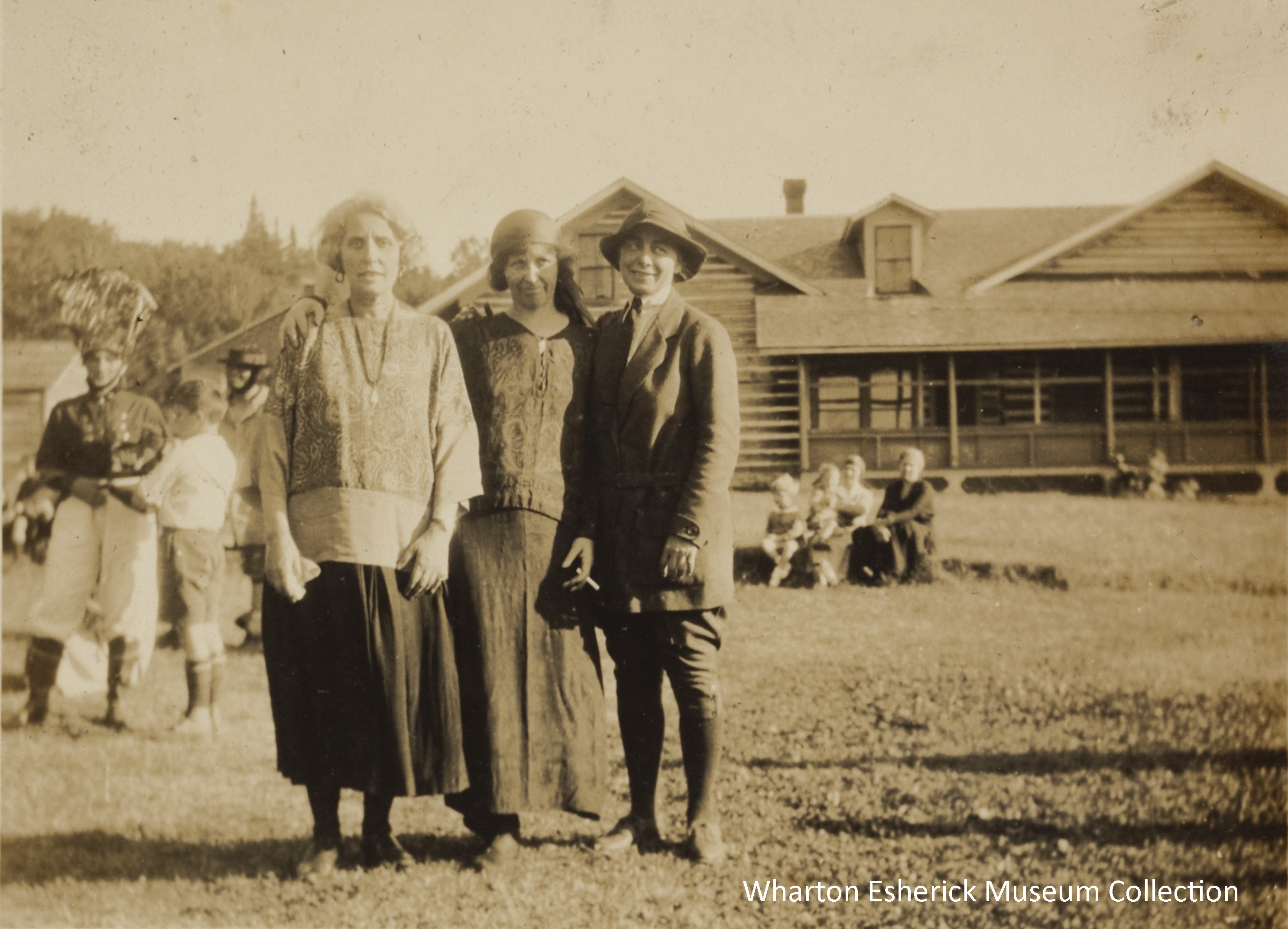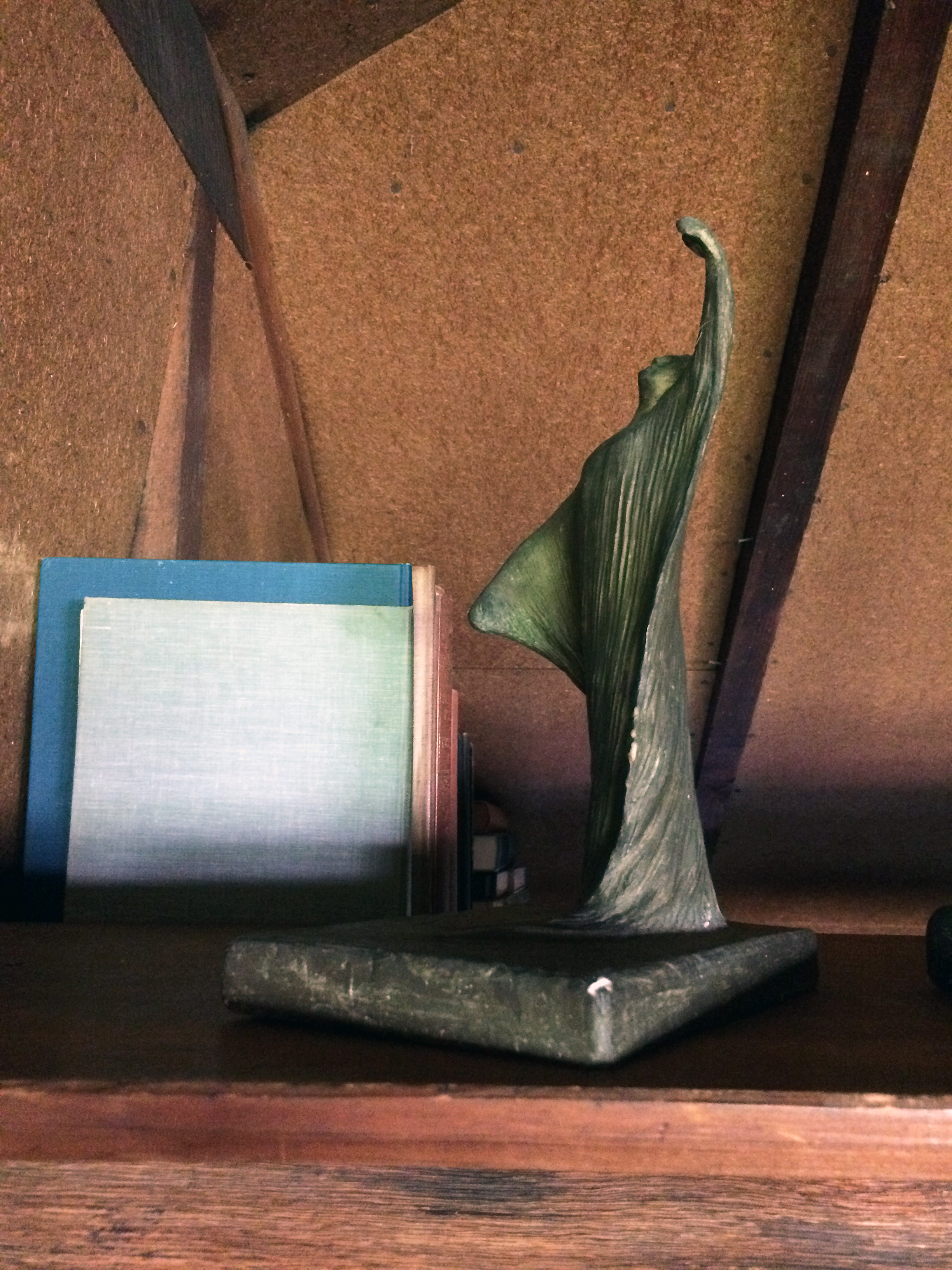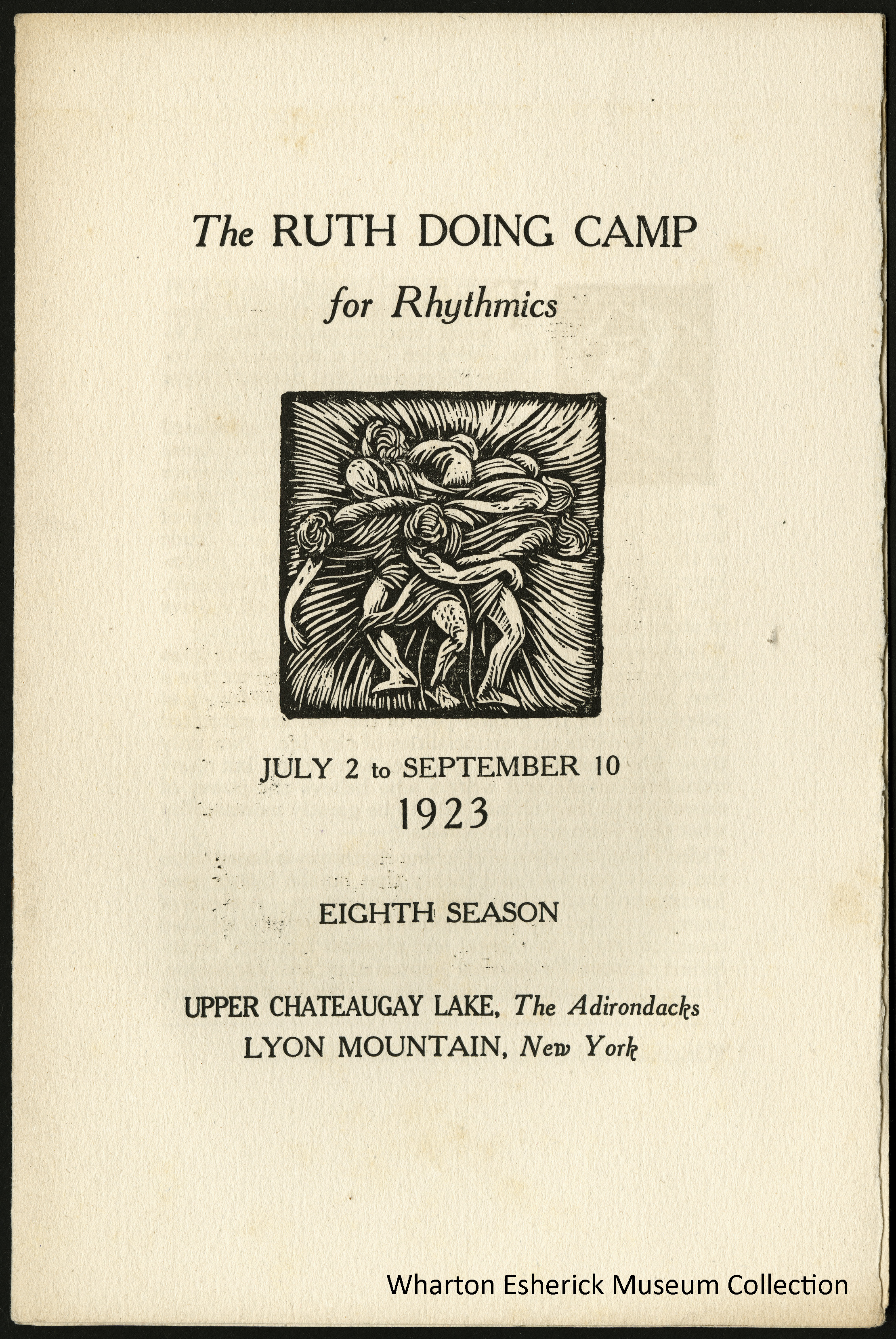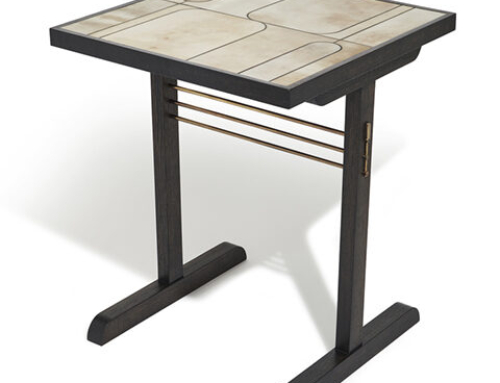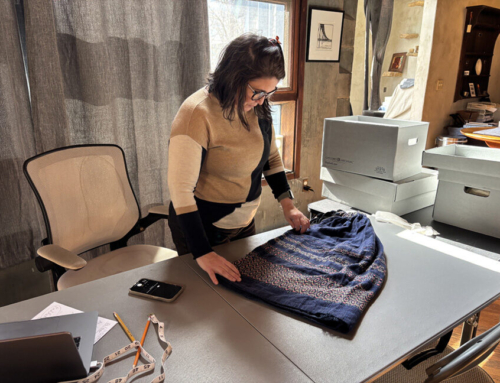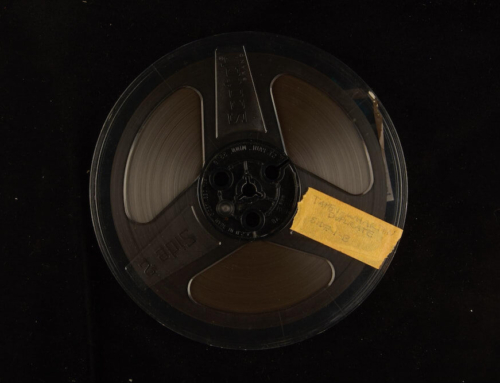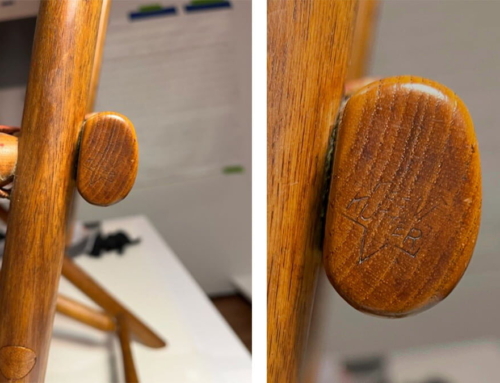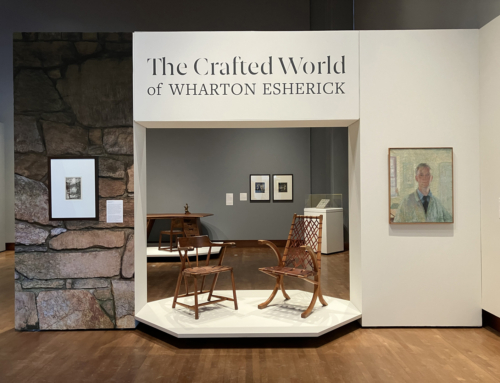Earlier this month we opened our latest exhibition, Wanderlust: Wharton’s Travels in Watercolor which explores a visual journal of the Esherick’s life and travels in 1919 and 1920 as the family visited (and Wharton painted) sites up and down the east coast. One such stop, in the summer of 1920, was the Gardner Doing Dance Camp, which became a family destination for many summers to come. Esherick completed many watercolors while at the camp that first summer, but as we’ll take a look at in this blog post, his creativity didn’t end there!
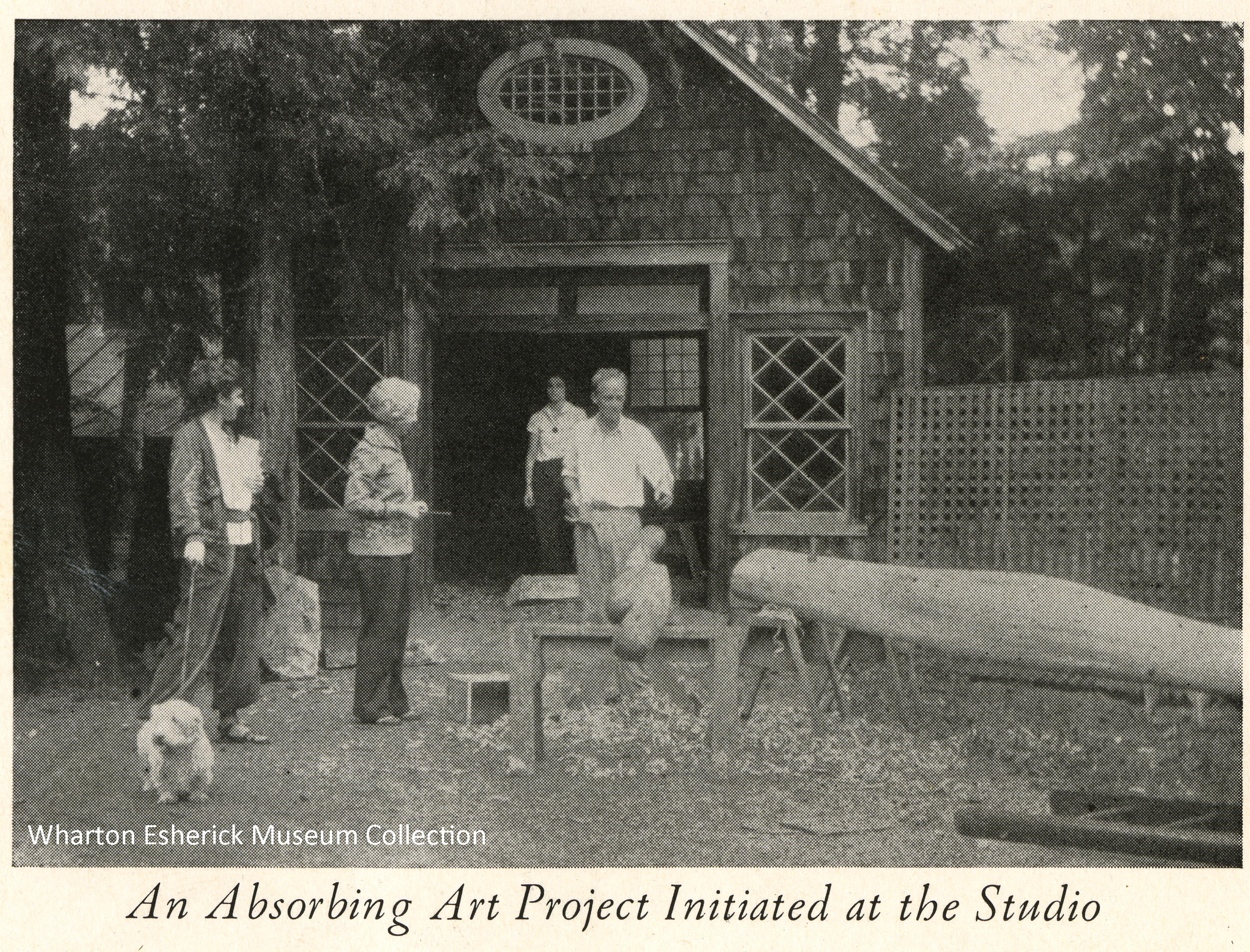
Wharton Esherick working on “Dance Finale” at the camp. This image was featured in a later camp brochure.
Gail Gardner and Ruth Doing opened the camp in 1916, having taken it over from Alys Bentley. The camp was located on Lake Chateaugay near Lyon Mountain in northern New York State until 1925, when they relocated to St. Regis Lake just a little further south. Gardner had found success as an opera singer before running the camp, while Doing had been a student of Alys Bentley’s, learning the rhythmic dance style that the camp would continue to teach. The Esherick’s learned of the dance camp through friend and author Sherwood Anderson and his wife Tennessee who had previously visited the camp themselves.
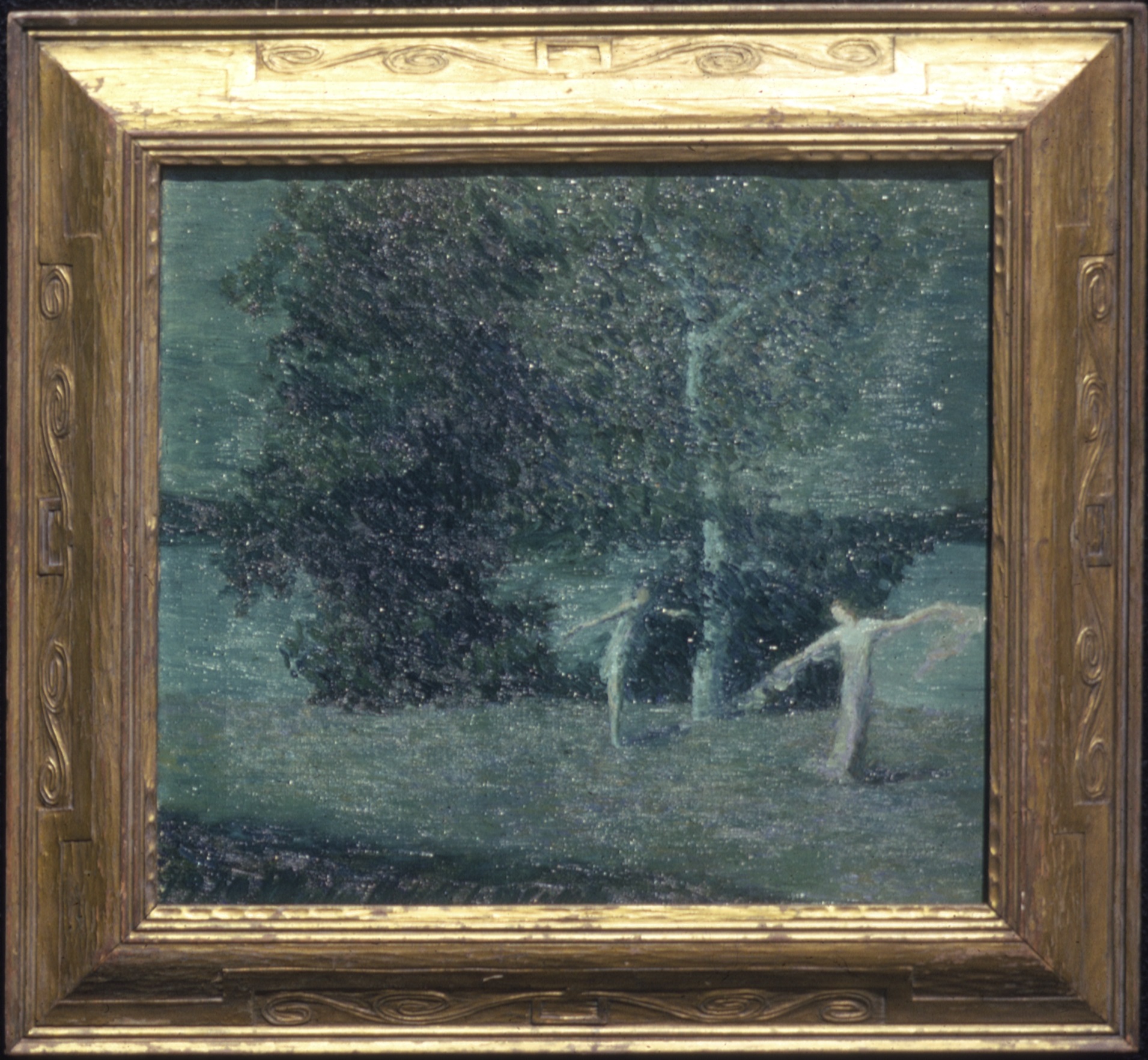
Esherick’s hand-carved frame compliments the dancers’ poses in his oil painting, “Dancers in the Moonlight,” 1920.
The freedom of this summer setting provided Esherick with ample time to create and the inspiration (primarily the dancers) that surrounded him took form in a wide variety of media, from the watercolors seen in our current exhibition, to oil paintings, wood and plaster sculptures, furniture and seemingly endless amounts of sketches.
Two early plaster sculptures, which now sit in Esherick’s bedroom, depict dancers from the camp, one of Ruth Doing, the other of dancer and actress Doris Canfield. Both done in 1920, these are very academic for Esherick, though the essential design elements (like the spiral) would show up again and again in Esherick’s work in progressively bolder and more modern designs.
These summers also provided him the chance to experiment with new woodworking projects including a number of trestle tables. In 1923 Esherick designed a large oak trestle table for the camp, the top of which was relief carved with abstract motifs developed by Esherick and other students. To create these designs he and his fellow campers listened and responded to music as they drew, attempting to capture the qualities of the music in line. This collaborative project gives us a glimpse of the experimental approach embraced at the camp.
Gardner and Doing themselves truly enjoyed Esherick’s artistic style and used his woodcuts to illustrate a number of their camp brochures. The brochures gave a taste of what to expect at camp, including their teaching philosophy, and provided logistical information, even detailing a list of what to pack (bloomers or knickerbockers of course!) In a later brochure, advertising the winter season classes for 1931-1932, Esherick’s woodcut illustration of a dancer is particularly dynamic in its pared down use of line. The winter season, held on West 56th Street in New York, was part of an active artistic area with the American Designer’s Gallery (run by Esherick’s friend and artist Henry Varnum Poor), the Threefold Restaurant, and Theodore Dreiser‘s apartment (Dreiser was another good friend of Esherick’s) all in the neighborhood.
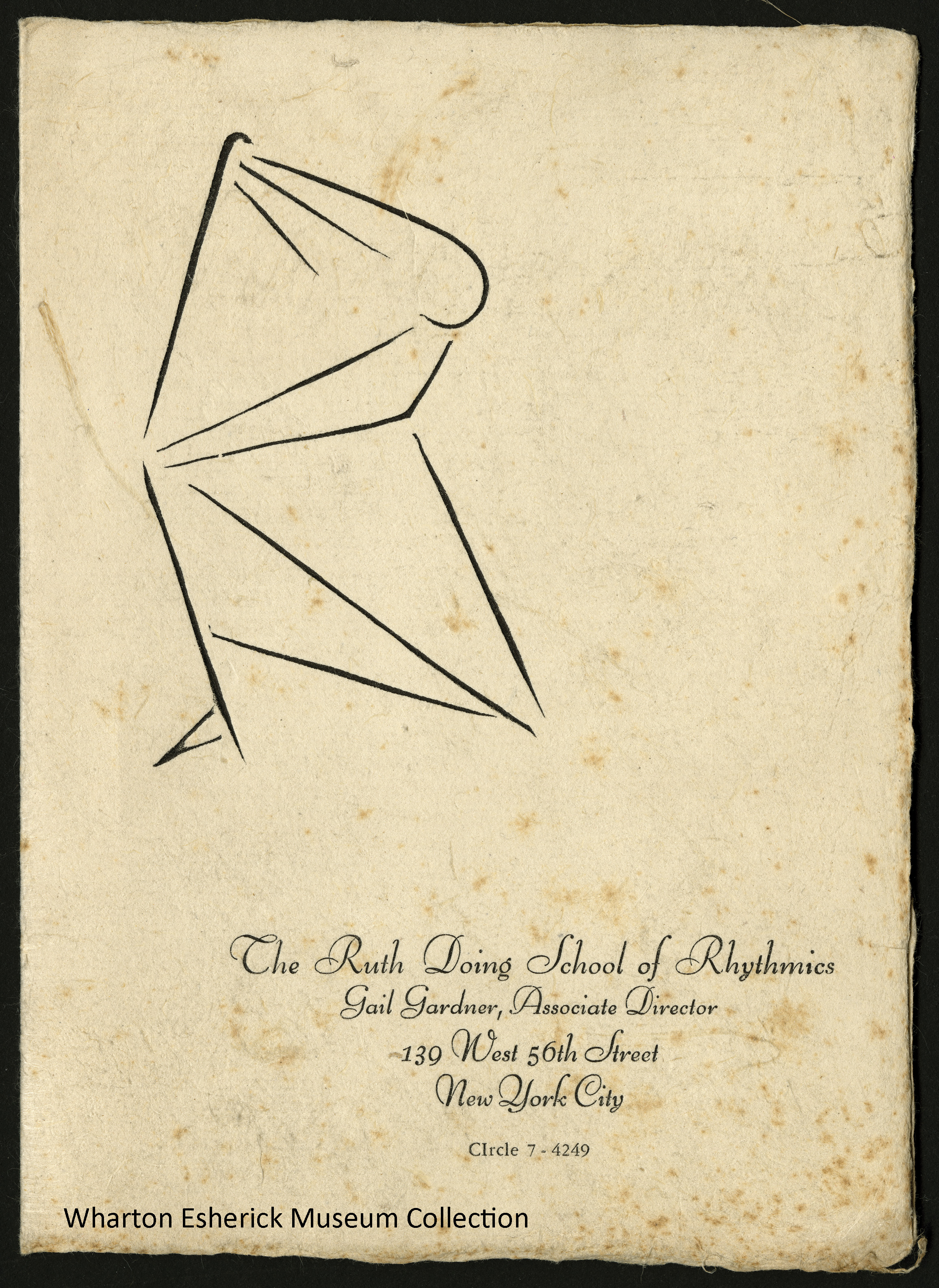
“Spirit Inactive”, woodcut illustration on the cover of dance camp brochure for the 1931-1932 winter season.
Esherick’s designs are full of twists, curves, and rhythms- themes from these early influences which continued through his art career to his very last artworks (Rhythms I and Rhythms II.) To learn more about the early travels and communities that shaped Esherick’s career be sure to stop by our Visitor Center to view Wanderlust: Wharton’s Travels in Watercolor, on exhibit through September 3, 2017.
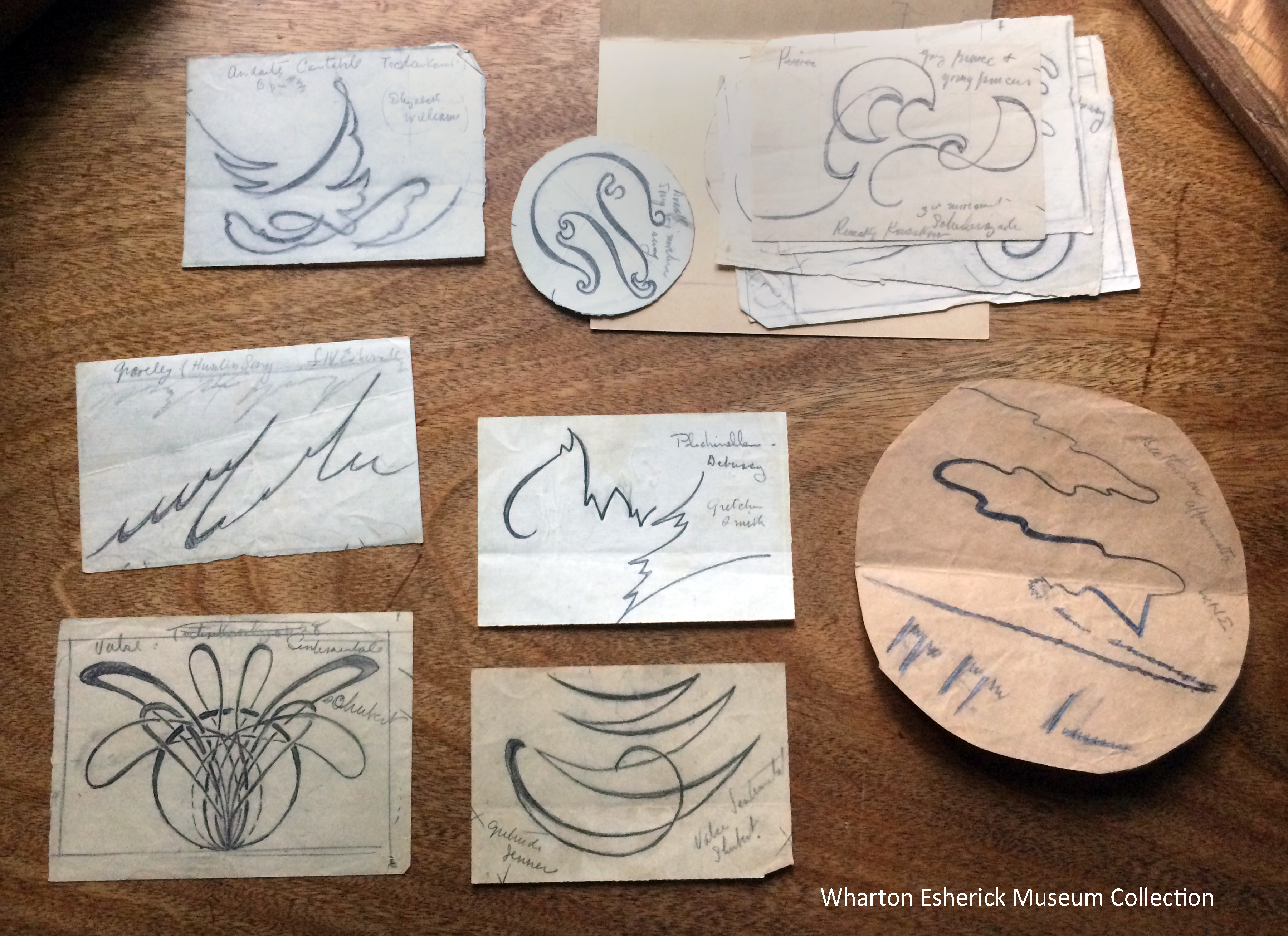
Designs such as these inspired by music (and drawn by fellow students) would adorn one of Esherick’s trestle tables at the camp.
More information about Esherick’s time at the Gardner Doing Dance Camp can also be found in Wharton Esherick: Birth of the American Modern and Wharton Esherick: Journey of a Creative Mind.
Post written by Visitor Experience and Program Specialist, Katie Wynne.

